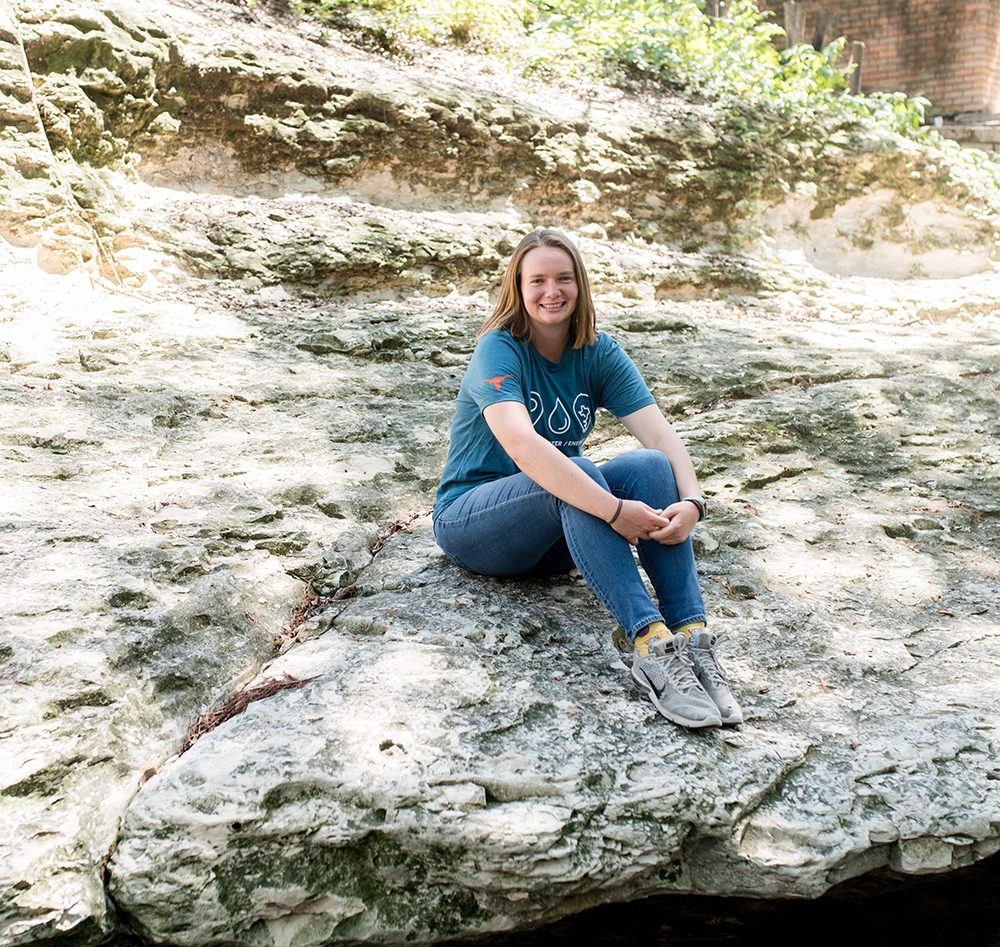5 Questions with Engineering Student Savanna Smith
After moving from Hawaii to South Texas as a teenager, Savanna Smith experienced culture shock in a variety of forms. The most immediate differences in food and colloquialisms were expected but she found the difference in how locals interacted with the environment surprising. These contrasts were the foundation for Smith’s interest in the give-and-take relationship we have with our environment. Now, Smith is a civil engineering senior in the Cockrell School with a particular interest in biomimicry, or how to solve problems by emulating nature’s patterns and processes. We sat down with Smith to learn more about the increasingly popular field of biomimicry and why UT Austin is the ideal place to carve out your own niche.
How did you know you wanted to be a civil engineer?
I enjoyed math a lot in school, but I also wanted to make a positive impact on society and use my education to help people and communities. I was initially drawn to civil engineering after watching a documentary on water desalination, which led me to learn more about water treatment. Civil engineering is a discipline that inspires me and provides what I am looking for in a career.
What is biomimicry and why does it interest you?
Biomimicry is a way to solve problems by looking to nature for their solutions, and civil engineering is a perfect field to incorporate biomimicry research. It is important because nature already has solutions for many of the issues that we face, such as wastewater treatment and pollution. Nature’s solution to wastewater pollution is a wetland. By constructing our own, human-made wetlands, we can design them to maximize the appropriate processes for the water needs of the area. Personally, I am most interested in biomimicry for its applications to wastewater treatment but there are so many more applications.
How would you say your overall experience has been (so far) as a student at UT?
I chose to attend UT because of the world-class caliber of the civil engineering program, the amazing location and the affordable tuition. A degree in civil engineering from the Cockrell School carries a lot of weight. It’s a globally recognized program that produces fantastic engineers.
Once I was here, I took full advantage of the opportunities that are available for all engineering students. I joined Engineers for a Sustainable World, a project-based student organization that allows us to “get our hands dirty,” apply what we’ve learned in class and work on sustainable engineering problems. It’s a great community and joining has really helped my success at UT. I’ve also been fortunate to have found great mentors within the program. I was an undergraduate researcher working with a graduate student who just completed his Ph.D. The experience taught me about what it actually means to solve problems—that it’s more than just answering one question, it’s about the larger scope and also the seemingly insignificant details.
What types of internships, research opportunities or other experiences have you had that incorporate your interest in biomimicry?
My internship this summer at Los Alamos National Laboratory allowed me to contribute to finding creative water solutions for new infrastructure being developed. This was exciting because I got to recommend biomimetic options for water treatment in addition to the more traditional techniques. The mycofiltration project through Engineers for a Sustainable World is another way that I’ve explored biomimicry applications. In it, our student-led project is incorporating mycofiltration into rain gardens and aiming to improve the water quality of rainwater runoff.
What are your plans after graduation?
One of the most valuable discoveries I’ve made as a student at UT is that I really enjoy research. So, I plan to apply to graduate school. My dream job would involve solving challenging engineering problems with creative, sustainable solutions and would give me the chance to work with underserved communities to bring basic amenities, like clean water or sanitary wastewater treatment, to people in need.
